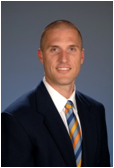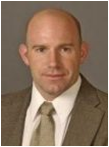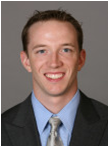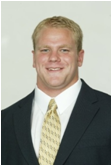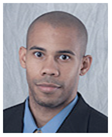
Mike Curtis
How and why did you get into the field of strength and conditioning?
Early in my collegiate academic career I thought that I wanted to work in the physical therapy field and I studied sports medicine at the University of Virginia. As an athlete I had always enjoyed the performance enhancement aspect of things as I saw that it gave me an opportunity to level the playing field with better athletes. In graduate school I came across a mentor in Tony Decker who taught me how to integrate both disciplines and I was sold on trying to keep athletes out of the training and on the field of play while also enhancing their ability to perform.
Who in the field has influenced or helped you the most? Influence your training philosophy? What have you learned from them that you can you share?
Early in my career it was coach Tony Decker who fostered my development and helped me form a training philosophy. Since then my philosophy has grown from my encounters and experiences with Vern Gambetta, Al Vermiel, Erik Helland, Mark Verstegen, and Darryl Eto. I guess the biggest thing I took from all of them was to never end your quest to be better at your craft.
Name 3-5 books every basketball strength and conditioning coach should have in their library and why?
1) Supertraining because of its scientific foundation in regards to sporting strength.
2) The Science and Practice Strength Training because it covers the basics.
3) Muscles Testing and Function with Posture and Pain by Kendall because Alex McKecknie of the Los Angeles Lakers once advised me to continuing educating myself in regards to anatomy and this book is the gold standard.
What is the last book you read and why?
The last book I read was Assessment and Treatment of Muscle Imbalance "A Janda Approach". I read it because I was fascinated by a group of Canadian Therapist who came in to work with some of our student-athletes here at Virginia and I wanted to read more about their training approach.
Generally speaking, what is your philosophy for training a basketball player? How does it differ from other sport athletes?
I primarily and initially focus on an athletes' ability to be an efficient and effective mover. I believe mobility, stability, and technical proficiency in fundamental movements should take place before any heavy loading is imposed. In regards to specificity I think that there must be some level of simulation that needs to take place in order truly get athletes to execute movements they need in the competitive environment.
What has been the biggest mistake you made as a coach when training a player?
In my early years as a strength coach I focused too much on numbers in the weight room and not on the numbers that really counted which were/are numbers on the court or field of play. I used to think that if they were strong I was doing my job. Now I believe that if they are healthy, have a level athleticism that relates to enhanced sport skill, and then strong I am doing my job.
How has your training philosophy changed in the last 3-5 years?
I have evolved from focusing solely on general strength and power development (clean, squat, bench) to devoting much more training time to functional and specific strength and power development through what some traditionalist would consider unconventional means.
For interns, volunteer coaches, graduate assistants, etc. aspiring to be basketball strength coaches, what advice would you give?
Find a mentor or group of mentors who consistently challenge you to be great and then grow.
What are the three (3) biggest mistakes a basketball player makes when it comes to strength and conditioning?
1) Utilizing lifts that do not make since for their lever system
2) Training the wrong energy systems for basketball through LSD work.
3) Not respecting/understanding the value a sound training program can have on performance and injury reduction.
What are the top three (3) training tips you would give to a basketball athlete beginning a strength and conditioning program?
1) Focus on controlling you own bodyweight before adding an external load
2) Make sure you train 3 dimensionally
3) Try to incorporate soft tissue work into your program on regular basis
What is your training philosophy regarding in-season training? Off-season training? Pre-season training?
In-season: Continue to build strength through the early non-conference and then maintain strength in the later portion to insure maintenance of force production.
Off-Season: Restore Mobility and Stability, Increase strength to enhance force production
Pre-Season: Enhance function specific to neuromuscular demands of the sport
What areas do you address for those players that don't play significant minutes during the in-season?
The athletes who aren't in the rotation typically train and condition before our home games. In addition to that we have instituted a 15min rule. Athletes who do not play a minimum of 15 minutes in a competition must complete and conditioning session before the next practice.
What is your philosophy on basketball conditioning? Some sport coaches believe in long distance training to improve basketball specific endurance? What is your opinion?
I don't believe in LSD for basketball athletes. I think it is counterproductive to developing the type of physical qualities desirable in basketball. I think that interval based protocols are best.
What are some of the biggest myths that still surround strength training and the basketball athlete?
Weight training affects your shooting skill.
Should female basketball players train differently than male players?
I think there are certain gender considerations that must be taken into account structurally and hormonally but at the end of the day training should be about being efficient in movement, getting strong, and developing the ability to producing force.
What assessments or evaluations do you use with your players during pre-season? Summer months?
We assess our athlete throughout the year. Our assessments are broken into 2 categories. The first is an orthopedic/movement screen, which involves an assessment of posture, functional movement and tissue length. The second is a performance evaluation that assesses vertical power (jumping), speed, and agility.
Are the training requirements for a post player different than a perimeter player? How so?
Yes, Post players are required to cover less total distance within a game but typically have to jump more in comparison to guards and wings. Additionally you must account for the differences in limb length in strength training through adjustments in rep schemes as athletes with longer lever are doing more work when compared to guards when utilizing identical rep schemes. This in addition to the fact that larger athletes take longer to recover must all be taken into account when developing programs for different positions.
There has been a lot of debate about the squat and single leg training. In your opinion, should basketball players squat? Year round? Only summer? Never?
I feel that is a decision that should be made on an athlete-by-athlete basis. Some athletes structurally are not made to squat in my opinion. A good strength coach will find another way to load the lower extremity and develop strength without exposing an athlete to potentially dangerous exercises. For those athletes that have been identified as low risk for squatting related injuries I have trained that movement year round.
Name some strength training gimmicks that basketball players and coaches should avoid?
Strength Shoes
What is the best way to develop lateral speed in basketball? Agility? First step quickness?
I don't know that there is a best way. What has been successful for me is teaching the proper mechanics of movement in a general sense in conjunction with strength training programs that focus on developing the physical qualities necessary to yield and overcome. As the competitive season approaches the general nature of the training becomes more specific in regards to specificity of joint angles and simulation of movements. I typically have gone through 4 phases in training movement to athletes. 1) Deceleration/ Yeilding 2) Starting Speed/strength 3) Agility (acceleration, deceleration, reacceleration) and 4) mimic function,
Players love to compete whether it's on the court or in the weight room. How do you create a competitive environment in the weight room?
Friday is our high volume days in the weight room during most off-season phases so we challenge our guys to compete and see who can lift the heaviest loads based on what RM range is prescribed for that day (ie. 10RM, 6RM). This is the only day we truly focus on competition in the weight room as our other days have a training objective that may be compromised by elevated volume and/or intensity due to competition. On the other hand all of our movement training in the special preparatory block is structured to challenge the athlete to do it faster or more times than his opponent.
What methods do you use to develop explosive power? What are your thoughts for using the Olympic lifts in your training?
Once again I think exercise selection is individual to the athlete based on body structure, training history, and their attention to details. My preference is to utilize Olympic lifting derivatives for power development. However, if an athlete lacks the necessary discipline and attentiveness to execute the lifts properly often times I choose different training modalities.
How do you address nutrition with your players?
We are lucky enough to have a sports nutritionist here at the University of Virginia and our strategy is to educate our athletes on healthy food choices for performance. As we make the transition here with a new sports nutritionist I have mandated that our student-athletes meet with the nutritionist once a month to discuss habits and continue education for nutrition after athletics.
What injury prevention strategies do you implement with your athletes?
Sound strength training and progressive movement training and an corrective exercise strategy that is derived from NASM, Grey Cook, and Gary Gray screening and assessment models.
What training advice would you give to a high school basketball player seeking to improve their strength and power?
Start with the basics. Master your own bodyweight first. Establish mobility, stability, and efficiency in fundamental movement patterns. You will become stronger and more powerful as you build relative strength and efficiency in movement. Once you have established that you can progress to more advanced training protocols.

